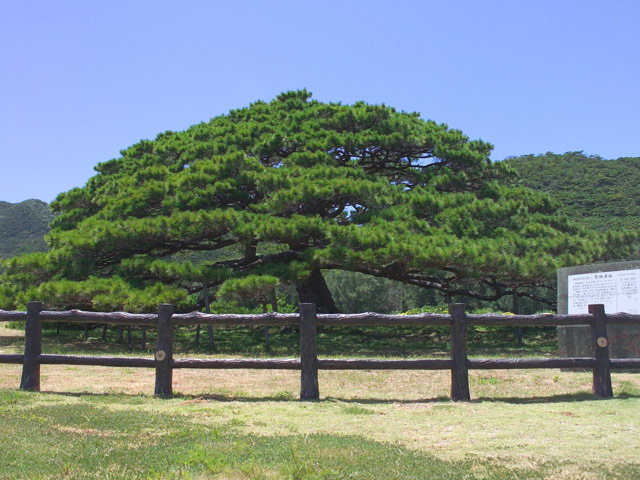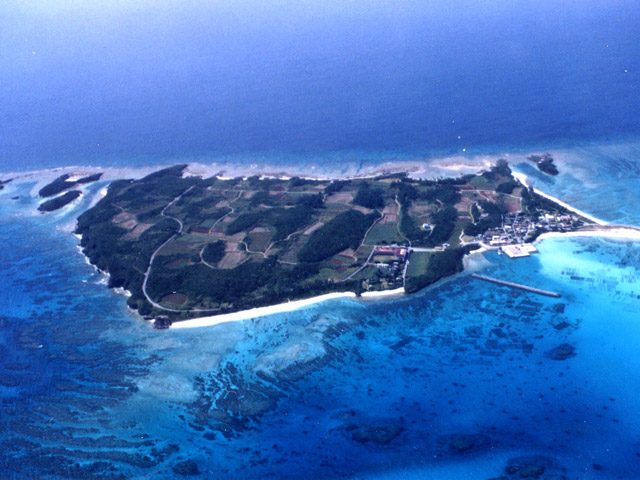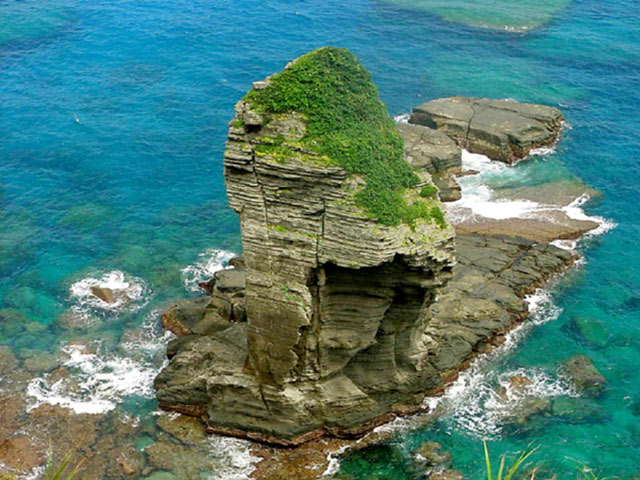
米崎ビーチ(いへや愛ランドよねざき)
長さ2kmのコーラルサンドの砂州からなる、米崎の南端にあるビーチ。水道、温水シャワーを備えた米崎キャンプ場「いへや愛ランド米崎」も併設されている。夜には視界180度に広がる満天の星空が楽しめる。テント貸出1泊2200円、フリーテントサイト1泊1600円、オートテントサイト1泊3800円、BBQセット1泊2200円。
Info
Spot Category

大きな傘を広げたような銘木
The information provided reflects the details available at the time of the survey.
Please note that facility details may change due to the facility’s circumstances, so please check for the latest information before visiting.
This content has been translated using machine translation.
Information provided by: JTB Publishing
The content uses an automatic translation service, which is not always accurate.
The translated content may be different from the original meaning, so please understand and use it.

長さ2kmのコーラルサンドの砂州からなる、米崎の南端にあるビーチ。水道、温水シャワーを備えた米崎キャンプ場「いへや愛ランド米崎」も併設されている。夜には視界180度に広がる満天の星空が楽しめる。テント貸出1泊2200円、フリーテントサイト1泊1600円、オートテントサイト1泊3800円、BBQセット1泊2200円。

伊平屋島の最北端、田名岬[だなみさき]にあるが、伊平屋島は沖縄県最北の有人離島なので、ここが「沖縄の最北ポイント」だ。頂上には伊平屋灯台が立つ。晴れて空気が澄んだ日には、やんばるの山々や鹿児島県最南端の与論島、その先の沖永良部島までを見渡すことができる。

伊平屋島の南西海上500m沖に位置する、周囲4.82kmの島。1時間もあれば歩いて回れる。野甫島と伊平屋島の間に、全長1244mの野甫大橋が架けられたのは昭和54年(1979)。車もよいが、自転車や徒歩でのんびり渡るのも格別。橋の途中からは伊是名島・伊江島・沖縄本島が見渡せ、反対側にはシマサキ海岸景勝地とよばれる絶好の展望が広がる。橋の付け根の両岸には白砂のビーチも。

Among the islands of Yonaguni, which are surrounded by sheer cliffs, the east-south is the area with the most severe and masculine landscapes. It is dotted with strange rocks that have been created over time due to the rough open sea. Close to Higashizaki, there is the Sannine stand, which shows the fault, which is divided into several layers, as a rock face. From the observation deck, the warship rock, which looks like a warship as its name suggests, is still washed by the waves. About a five-minute walk from Saint-Ninudai, there is a standing rock with a legend that a young man who could no longer descend from the top of the rock was helped by God.

A waterfall with a height of about 20m appears when you drive about 5 minutes into the mountains from the National Highway No. 58 Ikuta intersection.

It is a royal farm house built about 280 years ago, and has been spared the war disaster of the Okinawa War to completely leave the private house structure of the Ryukyu Dynasty period. Since he was a local head of state around the year of Kyoho 10 (1720), he also has a stately status as a form of a shabby house. Other features include kitchens with low roofs to use the attic called tungwa for storage, and pig huts called fools. The influence of medieval Japanese houses and Chinese architecture can be seen everywhere, telling the life of a wealthy farmer in the Ryukyu period.
This website uses cookies so that we can provide you with the best user experience possible. Cookie information is stored in your browser and performs functions such as recognising you when you return to our website and helping our team to understand which sections of the website you find most interesting and useful.
Strictly Necessary Cookie should be enabled at all times so that we can save your preferences for cookie settings.
If you disable this cookie, we will not be able to save your preferences. This means that every time you visit this website you will need to enable or disable cookies again.
